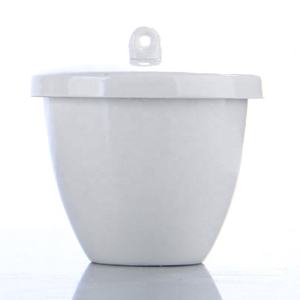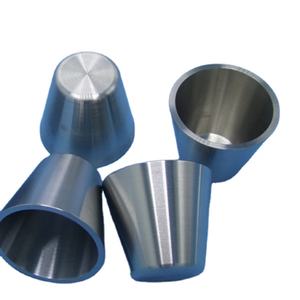Professional industry ceramic supplier, silicon nitride, silicon carbide, aluminum nitride and any other kinds of ceramics.
PRODUCT PARAMETERS
Description
Overview of Alumina Ceramic Crucible Industrial Electronics Insulating Ceramics Chemistry Teaching Experiment 99 Porcelain Crucible
Alumina Ceramic Crucible Industrial Electronics Insulating Ceramics Chemistry Teaching Experiment 99 Porcelain Crucible are specialized containers designed for withstanding extremely high temperatures in laboratory and industrial settings. They are essential for processes such as melting, calcining, and heat-treating a wide variety of materials, including metals, glasses, and chemicals. Our crucibles are engineered for superior thermal stability and chemical resistance, ensuring purity and reliability in the most demanding applications.
Features of Alumina Ceramic Crucible Industrial Electronics Insulating Ceramics Chemistry Teaching Experiment 99 Porcelain Crucible
-
Exceptional Thermal Shock Resistance: Withstands rapid temperature changes without cracking, ensuring durability and a long service life.
-
High-Temperature Stability: Maintains structural integrity at extreme temperatures, often exceeding 1500°C.
-
Excellent Chemical Inertness: Resists corrosion and reaction with molten metals, acids, and aggressive chemical fluxes.
-
High Purity & Low Contamination: Manufactured from premium materials to prevent sample contamination during sensitive processes.
-
Optimized Thermal Properties: Designed for efficient heat transfer and consistent performance in furnace environments.
-
Robust Mechanical Strength: Offers good resistance to physical impact and abrasion during handling and use.
Specifications of Alumina Ceramic Crucible Industrial Electronics Insulating Ceramics Chemistry Teaching Experiment 99 Porcelain Crucible
This alumina ceramic crucible is made from 99% pure aluminum oxide ceramic. It offers outstanding resistance to extreme heat. It reliably handles temperatures up to 1700°C (3092°F). This makes it perfect for demanding high-heat jobs. It won’t crack or warp easily under thermal shock. Sudden temperature changes are less likely to damage it.
The material shows excellent chemical stability. It resists attack from many acids and alkalis. This crucible won’t contaminate your samples. You get reliable results in chemical analysis. It’s a dependable tool for chemistry teaching labs. Students can safely perform melting experiments. Calcination processes work well with it.
Its strength and hardness are impressive. This crucible resists wear and abrasion. It lasts longer than cheaper alternatives. You save money over time. It performs reliably in tough industrial settings. Metal refining uses it often. Foundries trust it for holding molten materials. Glass production facilities utilize it too.
In electronics, this ceramic is a top insulator. It prevents electrical currents from leaking. It keeps components safe and circuits working right. Its high dielectric strength is crucial. This crucible form is just one useful shape. The material itself is vital for electronic substrates and insulators.
The crucible comes in common lab sizes. Typical capacities are 10ml, 20ml, 30ml, 50ml, and 100ml. You find the right size for your specific task. Its smooth surface is easy to clean. Emptying samples after use is simple. It withstands repeated heating and cooling cycles. This crucible is a fundamental piece of equipment.
Applications of Alumina Ceramic Crucible Industrial Electronics Insulating Ceramics Chemistry Teaching Experiment 99 Porcelain Crucible
Alumina ceramic crucibles are essential tools. They serve many important roles. Industrial electronics rely on them heavily. These crucibles hold and process materials needing very high temperatures. They are perfect for melting metals. They also work well for creating electronic components. The purity matters greatly here. Contaminants ruin sensitive processes. 99% alumina purity minimizes this risk significantly.
These crucibles are excellent electrical insulators. This makes them vital for insulating ceramics in demanding electrical applications. They isolate components reliably. They prevent unwanted current flow. High voltage systems need this insulation. Harsh environments demand it too. The material handles both extreme heat and electrical stress effectively.
Chemistry labs and teaching experiments use these crucibles constantly. Students learn fundamental techniques with them. They perform high-temperature reactions safely. Teachers demonstrate procedures clearly. The crucibles withstand sudden temperature changes well. Chemical resistance is another key benefit. Acids and bases rarely affect them. This ensures experiment results stay accurate. Crucibles last longer than cheaper alternatives.
The 99% purity alumina ceramic is the key. It offers exceptional thermal stability. It resists thermal shock remarkably well. This means heating and cooling cycles cause minimal damage. Chemical inertness is equally important. Most chemicals won’t react with the crucible material. This prevents sample contamination. Mechanical strength is good too. The crucibles resist chipping and cracking under normal use.
Different sizes and shapes are readily available. Finding the right crucible for a specific job is easy. They handle temperatures far exceeding most other materials. This makes them indispensable across science and industry. Reliability and performance justify their use. They are a fundamental piece of equipment for professionals and educators.
Company Profile
Tanki New Materials Co.Ltd. focus on the research and development, production and sales of ceramic products, serving the electronics, ceramics, chemical and other industries. Since its establishment in 2015, the company has been committed to providing customers with the best products and services, and has become a leader in the industry through continuous technological innovation and strict quality management.
Our products includes but not limited to Aerogel, Aluminum Nitride, Aluminum Oxide, Boron Carbide, Boron Nitride, Ceramic Crucible, Ceramic Fiber, Quartz Product, Refractory Material, Silicon Carbide, Silicon Nitride, ect. please feel free to contact us.

Payment Methods
T/T, Western Union, Paypal, Credit Card etc.
Shipment Methods
By air, by sea, by express, as customers request.
5 FAQs of Alumina Ceramic Crucible Industrial Electronics Insulating Ceramics Chemistry Teaching Experiment 99 Porcelain Crucible
Alumina ceramic crucibles handle extreme heat. They work well for melting metals or heating chemicals. People use them in factories and schools. These crucibles last a long time. They resist breaking under sudden temperature changes. This makes them reliable.
Why do they handle such high temperatures? The main reason is the material. Alumina ceramic is very stable. It doesn’t melt easily. Pure alumina melts above 2000 degrees Celsius. This is much hotter than many metals. The crucible stays solid. It won’t contaminate your material inside.
Where are they used in industry? Factories need them for electronics. They help make circuit boards. Workers melt solder or heat electronic parts inside them. The crucible insulates well. It stops electricity from causing problems. Labs use them for testing materials too.
Are they good for chemistry experiments? Yes, teachers and students use them often. They are safe for heating chemicals in class. The crucible won’t react with most acids or bases. It’s easy to clean after use. Students learn about high-temperature reactions safely.
Why call them 99 porcelain? This name tells you the purity. The crucible is made from 99% pure alumina powder. This high purity matters. It means fewer impurities. Impurities weaken the crucible. They can also spoil your melted material. Pure alumina performs better. It lasts longer under tough conditions.
REQUEST A QUOTE
RELATED PRODUCTS
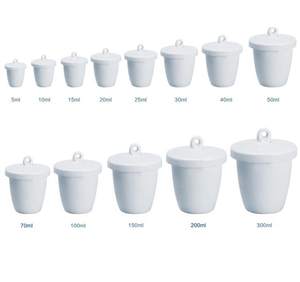
Ceramic Crucible for HORIBA Carbon Sulfur Analyzer
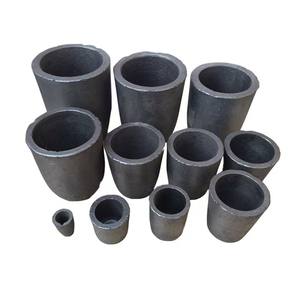
HIGH QUALITY CRUCIBLE for GOLD SMELTING Ceramic Fire Clay Fire Assay Crucibles and Magnesite Cupels for Gold Assaying

99% Al2O3 Alumina Combustion Boat With Lid , Rectangle Alumina Ceramic Boats Crucible
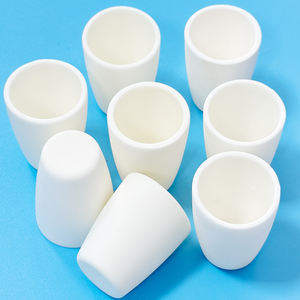
Custom Heat Resistant Alumina Ceramic Crucible Large Silica Opaque Quartz Crucible

Durable Ceramic Crucible for High-Temperature Applications
